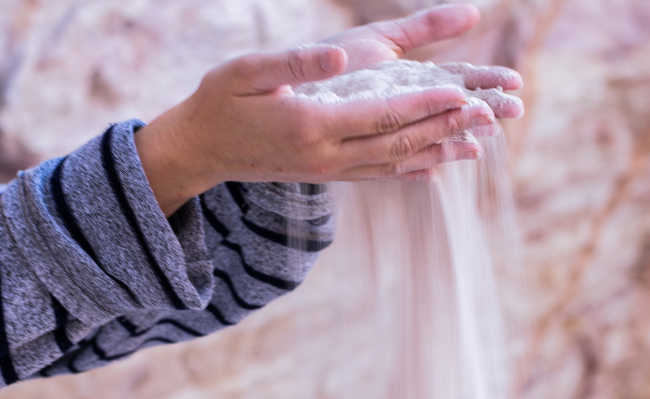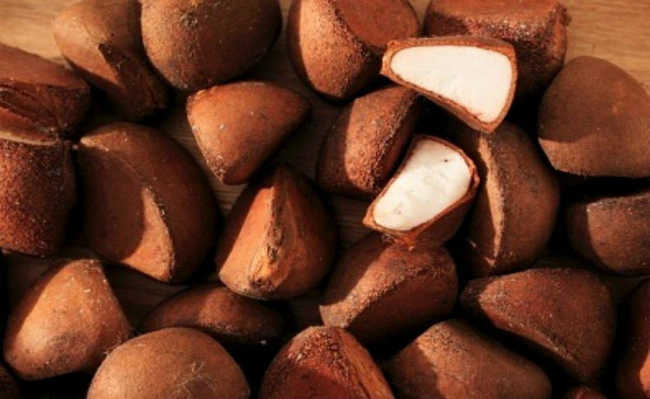White clay: what is it for?
White clay is used to remove skin blemishes, to heal, among other benefits.

Edited and resized image by Taylor Kopel, is available on Unsplash
White clay originates from silico-aluminic sedimentary rocks and is rich in several mineral compounds, but mainly in aluminum, silica and kaolinite, which are responsible for its properties. Amazon clays are types of clay that stand out for being rich in phytoactives full of cosmetic properties, one of which is white clay from the Amazon. Formed on the banks of rivers after flooding during the rainy season, it is a clay rich in iron, aluminum, boron, potassium, calcium and sulfur.
- Iron: importance and impacts of its extraction
All types of clay are minerals that form from the degradation and decomposition of rock due to exposure to wind, water, rotting vegetation and chemical agents over the years, which cause changes in the mineral.
The components present in them confer therapeutic properties and are very beneficial to health. But it is not today that the human being enjoys its qualities. Clay is one of the first forms of natural medicine known to mankind - it was already used by ancient civilizations as a medicine, mainly for wounds, and for some time now, it has become an excellent ally in aesthetic and medicinal treatments. The use of clay in these treatments became known as clay therapy.
The quality, as well as the compositions of the different types of clay, depends a lot on the region where they are extracted. There are several types of clay and each one is suitable for a specific purpose. Each clay has a composition of different minerals and it is this composition of numerous components that gives clays different colors, properties and applications. Therefore, it is very important to know your composition before using it.
applications
What is white clay for?
White clay, also called kaolin, contains a significant percentage of alumina, kaolinite and silica, in addition to a pH very close to that of the skin, for this reason it is the softest clay of all. It promotes oil adsorbing actions without dehydrating the skin, softens, heals and catalyzes the body's metabolic reactions. On the face, it can be used to treat blemishes, as it has a lightening effect - this on sensitive and delicate, dehydrated, aged and acne-prone skin. Its use is more suitable for the face, as it does not give good results in body treatments.
Manganese and magnesium are also present in its composition, and this fact makes white clay a great anti-inflammatory, which can be applied to acneic skin. It can be used for normal, mixed and oily skins.
The presence of silicon has a purifying, astringent and remineralizing action, with an antiseptic and healing effect that reduces inflammation and plays a fundamental role in the reconstitution of skin tissues, in addition to acting against flaccidity.
- Silica bags: a thousand and one uses of silica gel
The white clay of the Amazon is very rich in mineral salts, as these are brought by water from the Andes to the mouth of the Amazon River. It has minerals that help eliminate toxins from the surface of the skin and hair, providing a deep cleansing in these regions.
Sodium, potassium and iron maintain cellular respiration and the balance of electrons in skin cells, leaving the skin hydrated. Aluminum is an antioxidant and helps to remove toxins from the skin's surface.
These components activate cell regeneration, fight free radicals, channel positive energy, give skin elasticity, reducing the appearance of wrinkles. Amazonian white clay is indicated for facial and hair masks, creams, lotions and body soaps for cosmetic products intended for skin regeneration and cleansing and body scrubs.
Clay can also be used on hair. White is the softest of all and can be used on normal or damaged hair. It stimulates the oxygenation of the hair bulb, aids in hair growth and regulates sebum production. It has anti-residue, detoxifying and bactericidal action.
Preparation
White clay can be used for aesthetic treatments. It is found in powder form, so to apply it mix with pure water, hydrolates or saline solution. Clay contains enough nutrients to be used alone, it is not necessary to mix it with creams. Always use glass or plastic containers to make the paste, as metal ones can interfere with the minerals contained in the clay. Mix desired amount of white clay in water to form a paste.
How to use
Apply the paste made all over the face, except for the eyes and mouth and let it act for 20 minutes before removing it with water. The mask can be done every two weeks. Clay-based products, such as soaps, can be used daily.
The white clay hair mask should be applied to damp hair, massaging the scalp slowly and leaving it to act for about 20 minutes. Do not rub the white clay paste onto the strands as friction may damage them. The paste slides naturally over the threads without adding force. For best results you can finish the treatment with vegetable oils, see which one is most suitable for the desired purpose and apply after removing the clay.
As clays are considered anti-residues, they provide a deep cleansing of the scalp. For hair that contain chemicals, such as those from the relaxation and straightening processes, the application of white clay should be done two months after the chemical procedure, as it can remove certain substances that are contained in this process.
They can also be used as a "pre-shampoo" to relieve itchy scalp. Clay hair treatment can dry out the strands when done in excess - applying every 15 days is enough to nourish the hair. It is noteworthy that, for such benefits, clay must be natural and pure, free from substances harmful to health.
Where to find white clay
See the types of clays, vegetable oils and other 100% natural products at eCycle store. As they are pure and natural products, clays do not degrade the environment.










